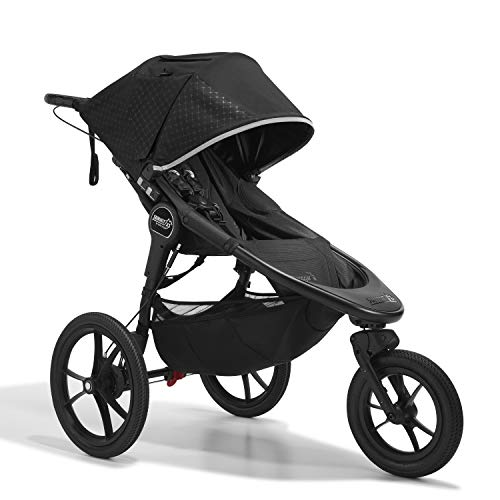15 Pram Vs Pushchair Benefits Everyone Should Be Able To
Pram vs. Pushchair: Understanding the Key Differences
When it pertains to transporting babies and young kids, parents often discover themselves overwhelmed by the numerous choices available. Among these alternatives, prams and pushchairs are two of the most typical kinds of baby transport. While the terms are typically utilized interchangeably, each has unique functions and advantages that deal with varied parenting needs. In this article, we will explore the basic distinctions in between prams and pushchairs, assisting parents make informed decisions about which is best fit for their household.
What is a Pram?
A pram, or perambulator, is a kind of baby carriage developed mostly for newborns and babies. Prams generally feature an entirely flat lying position, which is necessary for newborns who require to lie flat for back advancement. Most prams come geared up with a deep, enclosed body that offers a relaxing and secure environment for the baby, typically with extra features such as hoods or covers to protect them from the elements.
Key Characteristics of Prams:
- Flat Lying Position: Supports healthy spinal advancement in newborns.
- Enclosed Design: Protects the baby from wind and sunlight.
- Conventional Aesthetic: Often made from products like wicker or fabric, giving a timeless appearance.
- Weight and Bulkiness: Generally heavier and bulkier than pushchairs.
What is a Pushchair?
A pushchair, likewise referred to as a stroller or buggy, is created for older babies and toddlers who can stay up unassisted. Pushchairs permit numerous seating positions, including reclining options for naptime. They are usually lighter and more agile than prams, permitting moms and dads to browse busy locations with ease. Many pushchairs feature adjustable manages, storage compartments, and can frequently be folded for hassle-free transport.
Key Characteristics of Pushchairs:
- Seating Position: Designed for kids who can sit up, with different reclining positions.
- Lightweight and Compact: Easier to maneuver and transport.
- Flexibility: Many designs are convertibles or can accommodate cars and truck seats.
- Storage Features: Often consist of baskets for bring diaper bags, toys, etc.
Key Differences Between Prams and Pushchairs
Below is a relative table highlighting the vital differences in between prams and pushchairs.
Function
Pram
Pushchair
Target Age
Newborns to 6 months (flat position needed)
6 months to young child age (sitting unassisted)
Design
Confined, traditional design
Open, modern style
Weight
Much heavier, bulkier
Lighter, more compact
Seating Options
Flat just
Several positions consisting of reclining
Manoeuvrability
Less maneuverable due to weight
Extremely maneuverable
Storage Space
Limited
Generous beneath baskets
Choosing Between a Pram and a Pushchair
Consideration Factors:
- Age of the Child: Choose a pram for newborns and a pushchair for older babies and young children.
- Planned Use: If you prepare to do a great deal of walking or navigating city streets, consider a design that matches your lifestyle.
- Area: Assess the available storage in your home or lorry and how compactly a model can fold.
- Budget: Consider the rate variety, as prams and pushchairs can vary commonly in cost.
- Functions: Look for extra functions that might be advantageous for your day-to-day life, such as cup holders, canopies, or easy folding systems.
Advantages and Disadvantages
Advantages of Prams
- Perfect for Newborns: Encourages healthy spine development.
- Comfy Space: Provides a cozy environment for infants.
Drawbacks of Prams
- Weight: Heavier and bulkier, making them less useful for daily use.
- Restricted Use Time: Generally helpful just for the very first 6 months.
Advantages of Pushchairs
- Versatility: Suitable for longer durations as the child grows.
- Light-weight Design: Easier to carry and navigate.
Disadvantages of Pushchairs
- Not Suitable for Newborns: Requires the child to be able to sit up unassisted.
- Less Protective: Generally more exposed than a pram.
Regularly Asked Questions (FAQs)
1. Can I use a pushchair for a newborn?
A lot of pushchairs are not developed for newborns; however, many models include infant cars and truck seat adapters. Some pushchairs provide a fully reclining seat option that might be ideal for infants, but ensure the producer confirms it's safe.
2. Which is much better for travel?
Pushchairs are usually preferred for travel due to their lightweight and compact nature. They can frequently be folded easily for transportation on public transportation and fit more easily in cars and truck trunks.
3. The length of time can I utilize a pram?
Prams are generally ideal for infants until they reach around 6 months of age or when they can support themselves in a seated position.
4. Are there hybrid designs readily available?
Yes, numerous makers produce hybrid designs that can be transformed from a pram to a pushchair depending upon the child's development phase.
5. What should Stroller Pushchair Pram search for when buying a pram or pushchair?
When acquiring, consider security features, ease of use, toughness, weight, and storage. It's also suggested to check different designs for comfort before deciding.
Choosing in between a pram and a pushchair ultimately depends upon the age of your kid and your way of life preferences. Comprehending their distinctions helps parents make informed options that deal with their family's requirements. Parents can enjoy the journey of being a parent by ensuring that their kid's convenience and safety are always prioritized, while also considering their own benefit and style.
